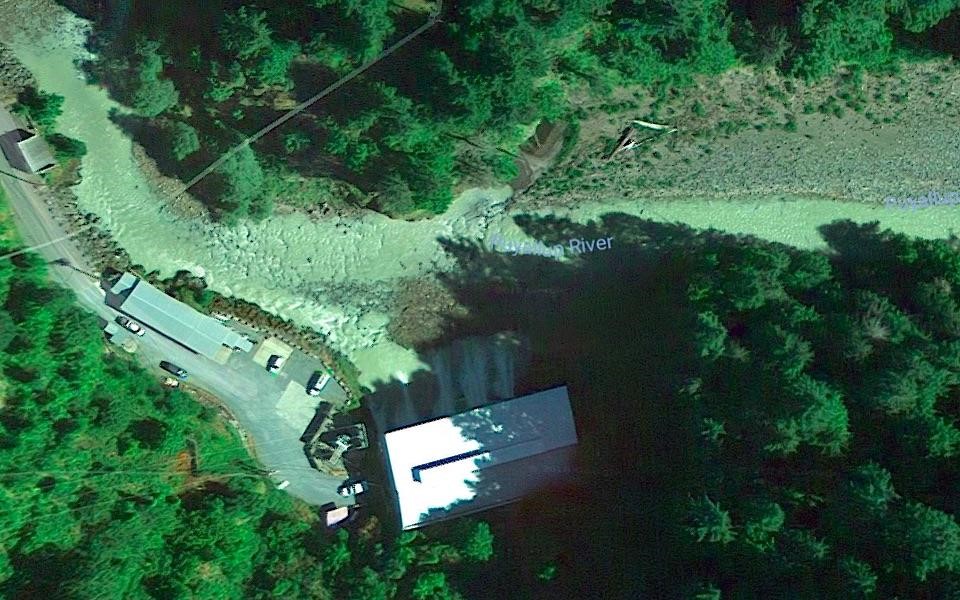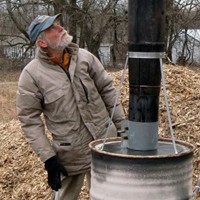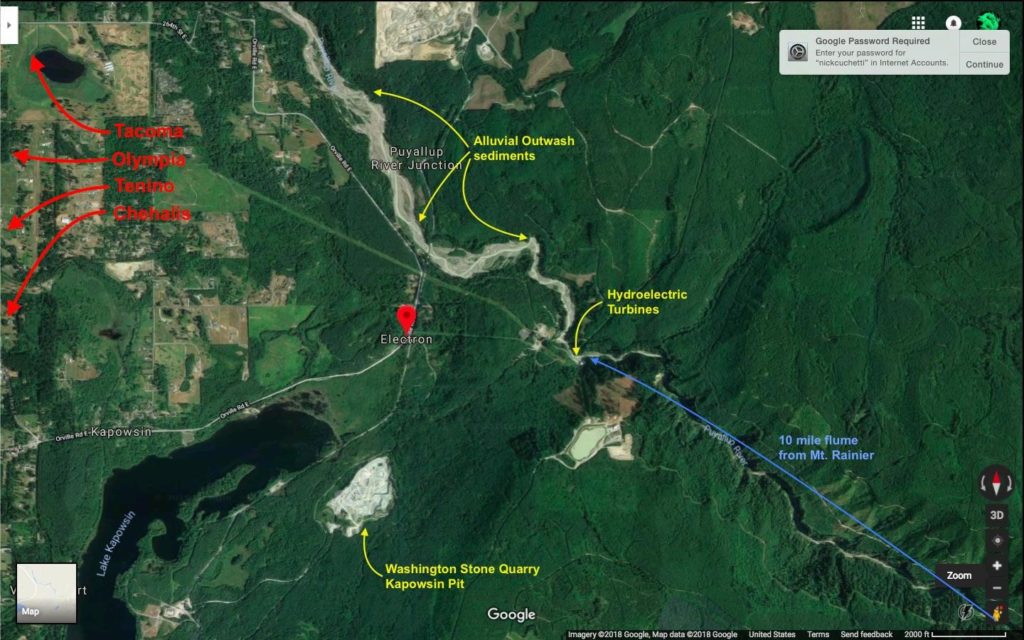Blending Biochar with Rockdust: High-efficiency Mineral Delivery
Seedlings grown in soil treated with rock dust. 4 trays on left are commercial rock dust products; 3 on right are potential midwest region resources.
David Yarrow emphasizes that carbon is only one element in soil, and that the priority for our planet is soil regeneration through stewardship of diverse living communities and cultures. The very actions essential to put carbon, minerals, and microbes back in soils may restore authentic community to human society, wealth to community economies, health to human bodies, and true culture to our relations with the Earth as Gaia, a unified living intelligence.
Foundation fertility
Rock and stone are the foundation of every house. Similarly, mineral elements are the foundation of every cell and organism. In 3 words: chemistry underlies biology. Minerals provide geometric structure to build a bio-body and an electric charge to power cell enzymes and metabolism. Also, minerals are like nails, screws, and fasteners to pin a biostructure together.
Further, soil is made from rocks that are eaten by bacteria and fungi. The poster child of this transformation of geology into biology is lichen, an ancient partnership of microbe and plant – specifically, fungi and algae. Lichen grow like scales on rocks. They consume mineral elements in rocks to create protoplasm, cells, and living biology. In the same way, fresh-fractured rock in the form of fine-sized dust in effect creates new soils to stimulate microbe activity and initiate soil regeneration.
Nutrient dense food

The Puyallup River, above, is greenish-white from so-called glacial milk sediments. (Click to enlarge)
To grow nutrient dense food, the key is to fully load the soil with minerals and, in that process, complete the trace elements and balance the ratios of the major elements. We must have complete geology for healthy biology. We can’t make or synthesize elemental atoms; we have to extract them from nature, from geology, from bedrock and stone, and, in liquid solution, from the sea.
A fundamental act of any nutrient dense grower is to add select rock dusts, sea products, and other mineral matter to soils. Instead of NPK chemical fertilizers, carbon-smart soil regeneration begins by sprinkling rock powders and stone grit into soils, along with biocarbon and microbes to process stone into soil. Gary Kline, of Blossom Consulting Services, speaks about organic farming’s failure to understand the key role of minerals and its failure to pay proper attention to mineral levels in soils. Organic farming focuses on organic matter as compost, manures, and mulches, but gives too little attention to balancing minerals.
This is why I’m excited to get 12 tons of ultrafine glacial gravel dust added to food-producing soils. Recently, five bags – each containing at least 1 ton of ultrafine glacial gravel dust – went to Port Townsend, Washington, where Francesco Tortorici works with farmers to use biochar with sustainable methods and materials. Shortly after, Moz Wright trucked seven more bags to Jeremy’s Farm Store in Chehalis, Washington. Jeremy will keep one at his store to distribute smaller amounts to other growers and gardeners. This will remineralize agricultural soils in the Tacoma region.
Geology of rock dust sources in the region
I am familiar with the source geology as well as the processing of Tacoma rock dust.
In the hamlet of Electron, the hydroelectric plant looks hopeful as a source of volcanic mineral fines. Downstream the puyallup river carries mineral fines from the volcanic rock of Mt. Rainier, which also contains significant amounts of glacial fines. The hydroelectric plant sits at the foot of a long ravine, which is the head of alluvial outwash terraces. Downstream, the river widens into meandering channels through centuries of sediments. Any of these downstream sediments are likely to be high value mineralizers for soil.
In addition, hundreds of US quarries are blasting and crushing magma into aggregate. Much of it ends up in concrete, which is a carbon positive CO2 emitter. Most quarries have a byproduct of mineral fines.
These extra-dense igneous bedrocks consist of primary crystalline elements in simple, unreacted states. Dense, freshly-fractured rocks have never been exposed to air, water and weathering. Many contain reactive elements that react with CO2 to form carbonates. First, this fixes carbon. Second, this changes soil chemistry. Third, this buffers pH to stabilize charge balances. Then, these rocks deliver other essential mineral nutrients – especially trace elements – most uniquely, rare earth elements.
Application of rock dust
The carbon-fixing potential of basalt and other magma rocks has received significant scientific attention recently. This dust, if blended with biochar, and added to soil, will dramatically boost microbe activity, nutrient mobility, plant growth and carbon fixation. This will also sharply cut the NPK carbon-positive fertilizers many farmers currently use.
If this is done even more intelligently and holistically, farmers can transition away from chemical fertilizers – and all the ecological catastrophes these chemicals are creating
My next project is a hydroelectric turbine facility on the puyallup river at the end of a long ravine straight down the west face of Mt. Rainier that is fed by melting glaciers loaded with freshly ground, recently unfrozen “glacial milk.” The turbines are fed by a 10-mile wooden flume that regularly gets clogged with very fine “silt,” which must be removed and dumped. I want that “silt” to put on farmland, in gardens, on forests, especially in the Midwest and Midsouth.
I’m confident the Tacoma glacial gravel rock dust will give a good response. However, I need hard numbers to talk to farmers with complete confidence, so a sample will be analyzed for elements. Rock dust is about trace elements, many needed at parts per million, some at parts per billion, and even a few at parts per trillion. Numbers on an assay sheet don’t reveal the effects on microbes, plants, and biology.
The Tacoma rock dust can be compared with another source of rock dust in the Pacific Northwest: Gaia Green. Gaia Green markets a similar glacial gravel dust I bought retail at $30 per 50-pound bag. Another regional rock dust resource is basalt from Cascade Minerals.
While the Pacific Northwest is rich in volcanic geology, it is rare in Missouri and Kansas, where I lived for 6 years. There, I gained access to lava rock from a 1.3 billion-year-old caldera 70 miles south of St. Louis. A dozen quarries crush and ship railcars of rhyolite, a dense surface magma flow out of the volcano.
My friend Thomas Vanacore in Bridgeport, Vermont, has devoted 30 years to the use of “minerals fines” from regional quarries as agricultural soil amendments. With Rock Dust Local, he markets various rock dust products and blends by bag, tote, and truck. Tom is my top expert on rock dust and soils.
Application rates
Thomas recommends at least 1 ton per acre, up to 10 tons. However, we can do better to apply these minerals effectively and efficiently to more acres and get more growth, including:
- Micronize particle size,
- Get it in the root zone,
- Complete and balance the blend,
- Apply with biocarbon,
- Apply with microbes.
With these methods, application rates of a few hundred pounds per acre will yield strong benefits on microbe activity, plant growth, and soil conditions.
The rock minerals must be eaten and digested by microbes – mostly by bacteria, the smallest, simplest bions – to properly, intimately wed the charged mineral particles to the water and carbon matrix that is life. These ionic minerals must be married to biocarbon – embedded in complex biocarbon structures, including specialized biomolecules like enzymes. Raw, concentrated rock minerals are best diluted and applied with biocarbons and microbes.
For guidance on application rates, see RTE’s Rock Dust Primer, written by Thomas Vanacore.
Blending mineral powders with biochar and compost
Since 2010, I’ve blended mineral powders and compost with biochar, and I find this is superior to deliver these nutrients. At Far Out Farm, I’ve begun to blend samples of five regional rock dusts and four biochars at various rates. A slight amount of water in biochar is critical to successful blends. My favorite method is hand-mixing and sprinkling by shovel for precision placement, but farmers need a more efficient mechanized bulk process.
Last June in Sikeston, Missouri I performed a seedling trial of seven rock dusts, with positive results. As soon as Rod Sceva at Far Out Farm has his greenhouse covered, I’ll start seedling trials, which will yield visible results in two weeks and are complete in 30 days. There is no need to prove these materials work; my trials are to test various rates and blends to understand how different materials affect soils and plants, and to learn best uses.
We’re restoring the foundation to the soil food web, to farm production, to nutrient-dense food, to local economy, and to human health.
David Yarrow Biography
David Yarrow is a holistic healer and food and farm activist with over 40 years participation in several grassroots movements, mostly in the Northeast. In the 70s, he started a community garden to grow food, consumer co-ops to sell natural foods, and On the Rise Bakery to sell whole grain, soy, and tofu products. His commitment to and advocacy of sustainable organic agriculture and food systems has led to the establishment of several projects, conferences, and organizations – including Bring the People Back Home, Closing the Food Circle, Archangel Ancient Tree Archive – each with the initiative of grounding a more sustainable future for humanity.
His first encounter with a rock dust strategy was in 1988 with organic farmers Tom MacDonald and his wife Shelley in the Finger Lakes of upstate New York. In 1992, he wrote a grant proposal for the National Aggregate Association (NAA) to research using their waste byproducts – mineral fines (the aggregate industry term for rock dust as a by-product) from screening aggregate – as a soil amendment. The NAA funded the USDA Agriculture Research Center in Beltsville, MD to study five types of rock dust plus “yard wastes” (compost) on a three-year wheat-soy-corn rotation. ARS research showed mineral fines plus compost performed as well or better than conventional fertilizers, both in yield and nutrients. (Read more here.)
In 2003, David helped Robert Cain start SeaAgri, which ships millions of pounds of SEA-90 sea minerals every year to farms across North America. In 2007, David learned about biochar and investigated its effects on soils. He began to advocate and educate about biochar use for agriculture, food quality, renewable energy, and climate mitigation. Over the past several years, David has taught several seminars, including at the 2013 North American Biochar Symposium, to earn the title “Wizard of Biochar.”
Linked Resources
- Leverhulme Center for Climate Change Mitigation http://lc3m.org/
- Gaia Green http://www.gaiagreen.com/rockdust.html
- Cascade Minerals http://www.cascademinerals.com/about/blog/
- Rock Dust Local http://www.rockdustlocal.com/
- SeaAgri https://seaagri.com/
- RTE Rock Dust Primer https://www.remineralize.org/a-rock-dust-primer/
- 2013 North American Biochar Symposium https://scholarworks.umass.edu/biochar/2013/
Support us on Patreon
Thank you for joining us today! Please become a member of RTE and support us on Patreon. Unlike many larger organizations, we work with a team of determined and passionate volunteers to get our message out. We aim to continue to increase the awareness of remineralization to initiate projects across the globe that remineralize soils, grow nutrient dense food, regenerate our forests’ and stabilize the climate – with your help! If you can, please support us on a monthly basis from just $2, rest assured that you are making a big impact every single month in support of our mission. Thank you!










Michael Curry
March 13, 2020 (7:09 pm)
What is the North American Market potential for Rock dust?
Joanna Campe
April 5, 2020 (2:06 pm)
Hi Michael! There is a huge potential for the creation of products for agriculture as remineralization becomes more widely known. Rock Dust Local’s Tom Vanacore is looking to create an infrastructure for this and offers many regional products. There are thousands of quarries in the US, many of which have byproducts that are suitable for agriculture and to sequester carbon.
–Joanna Campe
Clayton Postma
August 12, 2024 (8:55 am)
We have created a product called RegenR8 in South Africa pelletizing rock dust and biochar for easy application. Used to partially replace chemical fertilizers at a rate of 10 to 15 % with great results. This will hit the market by Spring this year with great uptake expectations.